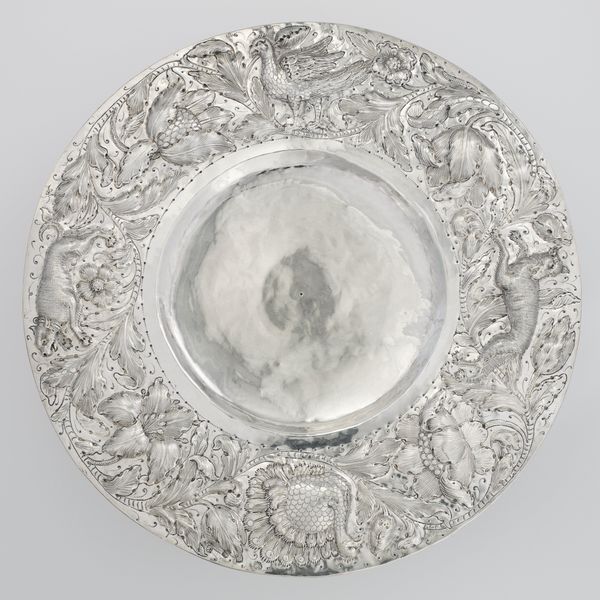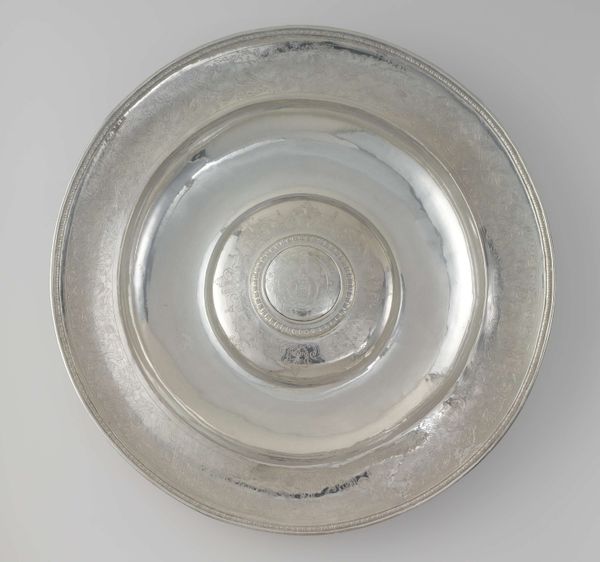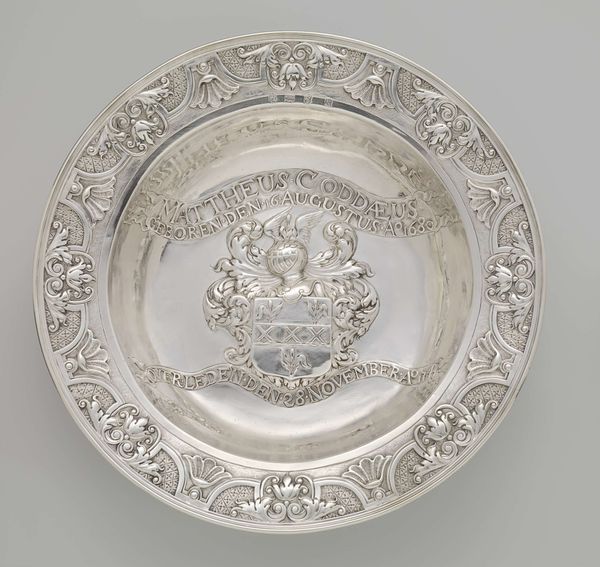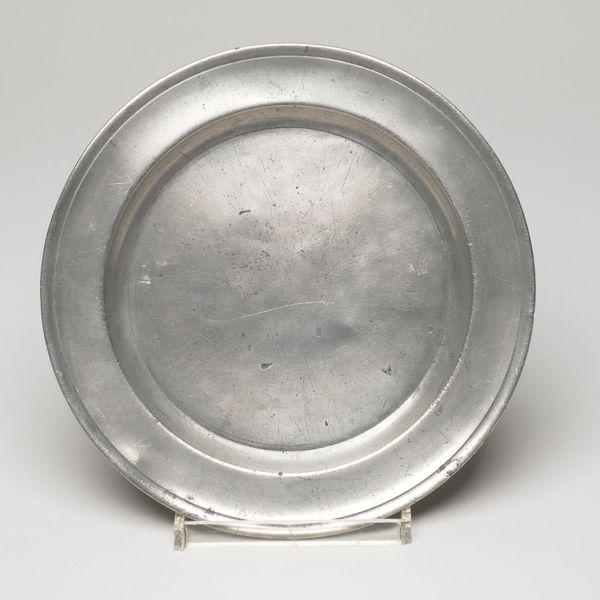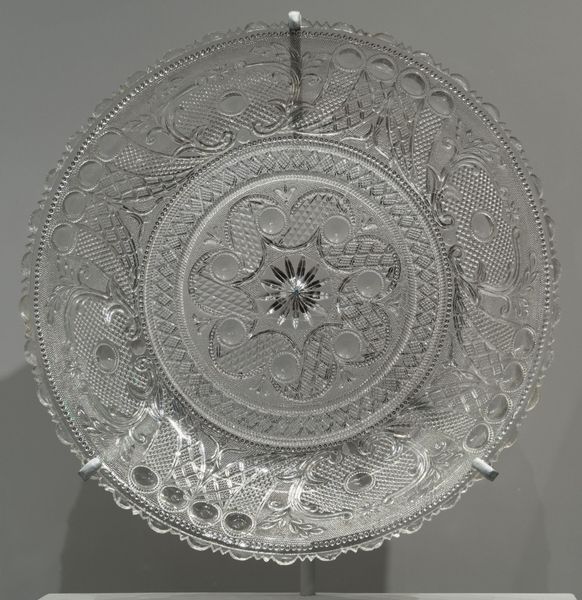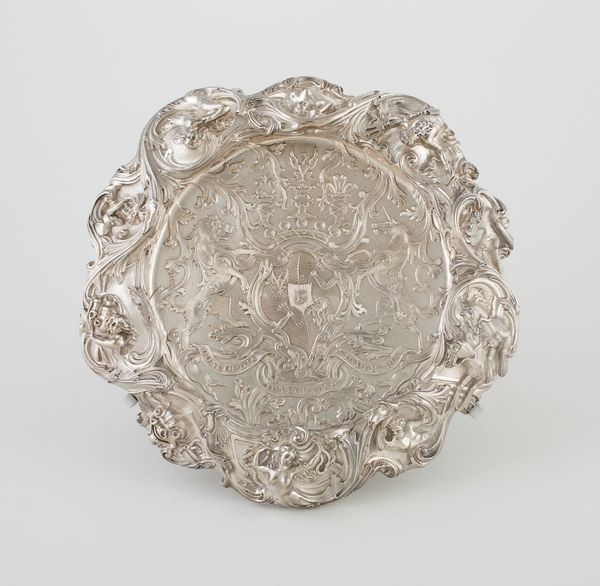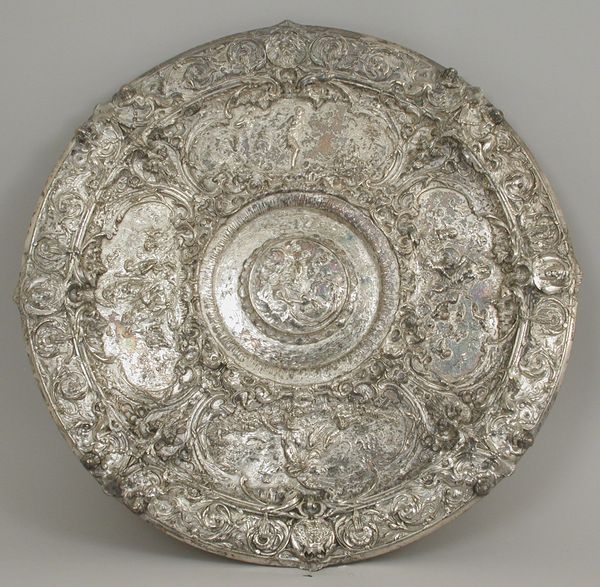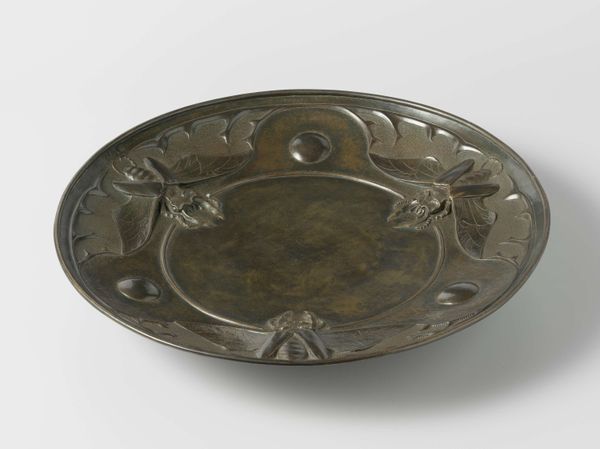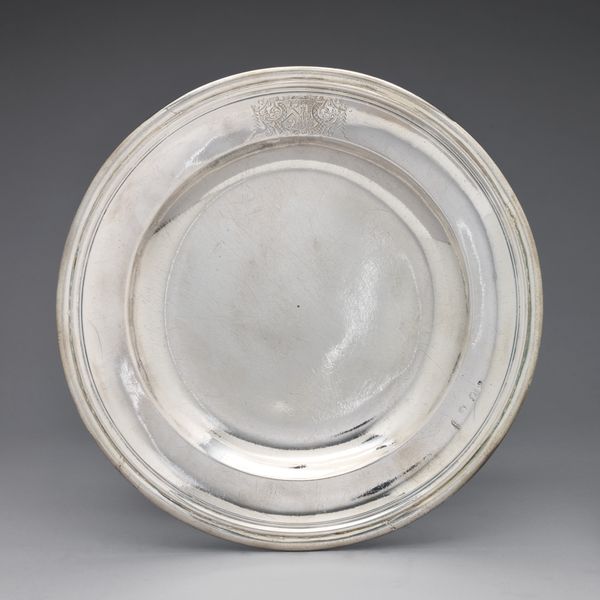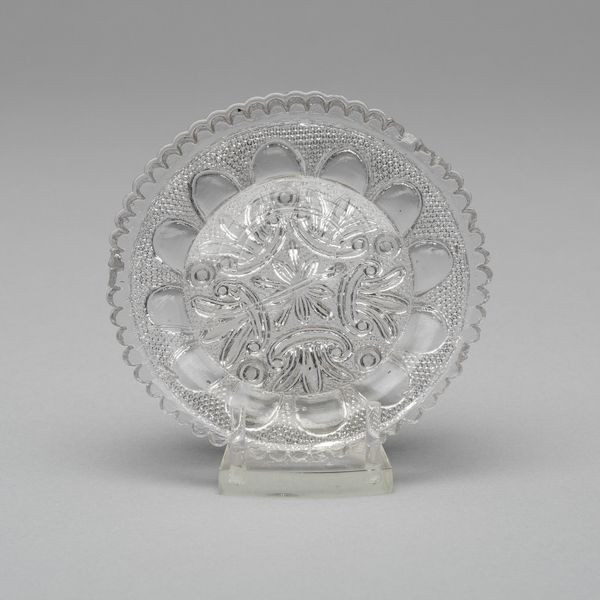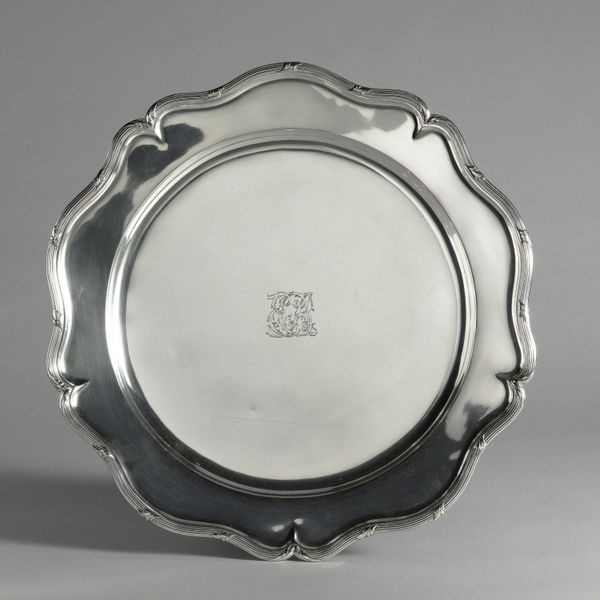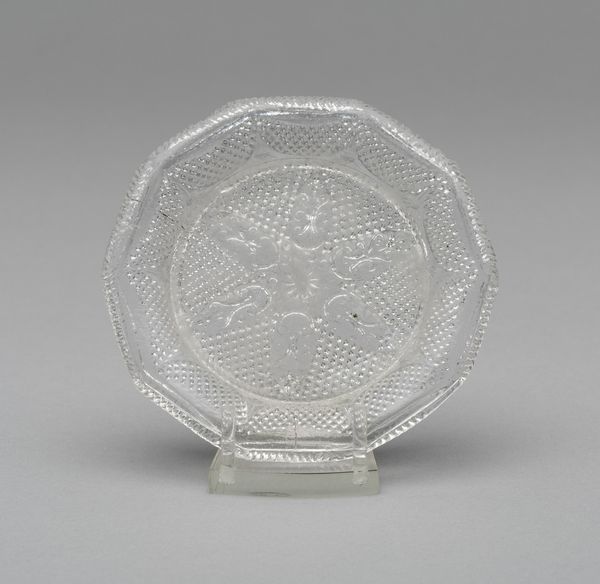
silver, metal, relief, sculpture, engraving
#
silver
#
baroque
#
metal
#
sculpture
#
relief
#
stoneware
#
sculpture
#
ceramic
#
history-painting
#
engraving
Copyright: Rijks Museum: Open Domain
Curator: Welcome! Here we have a stunning example of Baroque craftsmanship, a silver dish made between 1684 and 1687. It's currently held at the Rijksmuseum, and it's referred to as the 'Piet Heyn dish.' Editor: My first impression is of restrained power. The silvery surface reflects the light beautifully. It’s imposing. Curator: It truly is. The central scene shows Vice-Admiral Piet Heyn capturing the Spanish silver fleet in 1628, a pivotal moment in Dutch history and its rise as a naval power. Editor: The central image is lightly engraved, depicting the naval battle as the dramatic narrative unfolds on the central ground of the dish. And the relief work around the rim is quite compelling. Curator: Indeed. The dish isn't merely a decorative piece, but a political statement celebrating Dutch maritime prowess and wealth. Heyn's victory financed the Dutch Republic’s war against Spain, marking a moment of significant colonial advancement but obviously involving dispossession of others. Editor: Yes, the edges of the plate use intricate symbols. The composition creates this amazing tension. Curator: Around the rim, you see armorial trophies symbolizing the continents—Europe, Asia, Africa, and America. These weren’t merely geographical markers, they were claims of dominion and commercial reach achieved through naval force and colonialism. Editor: It is easy to notice how Baroque love of opulent details serves a clear agenda here. What appear at first as ornamentation becomes a complex encoding of colonial power through objects and iconography. It seems the visual structure underscores the dominance. Curator: Precisely. Remembering it served food at elite tables, it was a stark and regular reminder of the source of their wealth and position. The history is engraved and embodied right in the silver itself. Editor: Reflecting on it, the formal elements—the reflective silver, the layering of relief and engraving—they really amplify this narrative of control and plenty. It almost makes you uncomfortable looking at it with present eyes. Curator: It encourages us to engage in uncomfortable but necessary dialogue to reconsider how such seemingly innocuous objects perpetuated historical narratives of power and conquest.
Comments
rijksmuseum about 2 years ago
⋮
Piet Heyn became famous for his conquest of the Spanish ‘Silver Fleet’ in 1628. The Spanish ships were laden with Mexican silver. The sale of the spoils yielded an astronomical fifteen million guilders. It was a painful blow for Spain, particularly because the Netherlands used the money to wage war against the Spanish. This dish was fashioned from the seized silver.
Join the conversation
Join millions of artists and users on Artera today and experience the ultimate creative platform.
